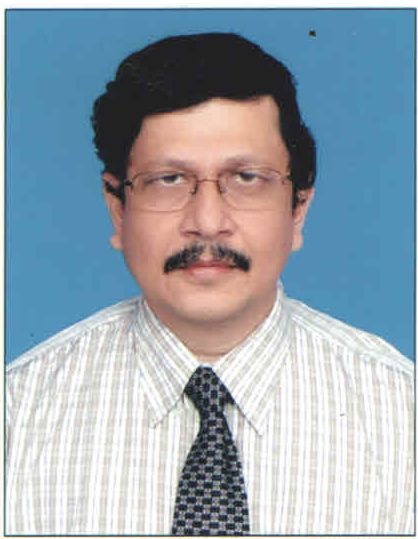
Computational Biology
Dr. Sujan K Dhar, Ph.D.
sujan.dhar@ms-mf.org
Dr. Smitha PK has been involved in translational research, developing various molecular diagnostic and immune theragnostic products for past 15 years. She has been trained extensively in molecular biology and immunology during her PhD days (Bharathiar University) and over one and half decade long stint with the biotech Industry. She is an expert in making and characterizing monoclonal hybridoma as well as recombinant antibody and proteins. Her PhD, though in plant biotechnology, revolved around molecular and immuno-assay development utilizing nano-materials. Her product research and development capabilities are displayed by her publications and 2 patents. Another patent towards a screening platform development is on the way. Industry experience in leadership roles gives her an edge in forming and running an independent Product Research Program in active collaboration with the research teams of MSMF. She has active collaborations with IISc and other academia. Currently, she is pursuing her passion of novel therapeutic development to treat cancer utilizing the immune weapons. Diagnostics, that she develops, are by-products of her research!
Research Interests
Understanding the mechanisms of carcinogenesis and drug resistance is essential in order to develop clinically viable models that predict susceptibility to tumour development or resistance to treatment. Molecular profiling of head and neck cancers to identify the changes during carcinogenesis and drug resistance, assessing the known markers from the available databases are the main approaches adopted in the lab. Additionally, the role of CSCs in the processes is being explored. Carcinogen induced animal models are the major tool to assess their role in a systematic manner and these studies have already been initiated. CSCs have long been associated with treatment resistance; drug resistant cell lines been developed in the group are being used to delineate the underlying mechanisms.
Publications (Recent)
- Govindan SV, Kulsum S, Ramanan S, Das D, Seshadri M, Hicks Jr W, Kuriakose MA, Suresh A Establishment and characterization of triple drug resistant head and neck squamous cell carcinoma cell lines. MMR 2014 (Accepted)
- Baeten J, Suresh A, Johnson A, Kuriakose MA, Flynn A and Kademani D Molecular imaging of oral premalignant and malignant lesions using fluorescently labeled lectins. Translational Oncology 2014 (Accepted)
- Kekatpure VD, Singh M, Selvam S, Shetkar G, Hedne NC, Trivedi NP, Siddappa G, Govindan SV, Suresh A, Rangarajan B, Dannenberg AJ, Kuriakose MA. Factors Predicting Outcome Following Salvage Treatment for Stage IV Oral Squamous Cell Carcinoma: Evidence of the Potential Importance of the COX-2-Prostaglandin E2 Pathway. Head Neck. 2014 Apr 25. doi: 10.1002/hed.23721
- Elango JK, Suresh A, Elango EM, Lakshmi S, Hiran KR, Sundaram K, Kuriakose MA. Role of Human Papilloma Virus in Oral Tongue Squamous Cell Carcinoma. As Pac J Can prev 2011; 12(4):889-96.
- Elango JK, Anandkrishnan N, Suresh A, Iyer SK, Sundaram K R, Kuriakose MA Mouth Self-Examination to improve oral cancer awareness and early detection in a high-risk population Oral Oncol. 2011 Jul; 47(7):620-4. Epub 2011 Jun 8.
- Suresh A, Vannan M, Dhanya K, Priya S, Elango EM, Thangaraj K and Kuriakose MA. Resistance Response Molecular Signature for Oral Tongue Squamous Cell Carcinoma Disease markers 31 (2011) 1-14
- Vallinayagam S, Jehan Z, Pradhan S, Hemakumar R, Suresh A, Sridevi R, Ahuja YR, Singh L and Rachel AJ. Novel non-coding RNA from human Y distal heterochromatic block (Yq12) generates testis-specific chimeric Cdc2L2. Genome Research, 2007; 17 (4):433-40.
- Suresh A, Shah V, Rani DS, Singh BN, UmaPrasad G, Subramanian S, Kumar S and Singh L. A mouse gene encoding a novel member of the WD family of proteins is highly conserved and predominantly expressed in the testis (Wdr13). Molecular Reproduction and Development 72 (2005) 299-310.
- Singh BN, Suresh A, UmaPrasad G, Subramanian S, Sultana M, Goel S, Kumar S, and Singh L. A highly conserved human gene encoding a novel member of WD-repeat family of proteins (WDR13). Genomics 81 (2003) 315–328.
